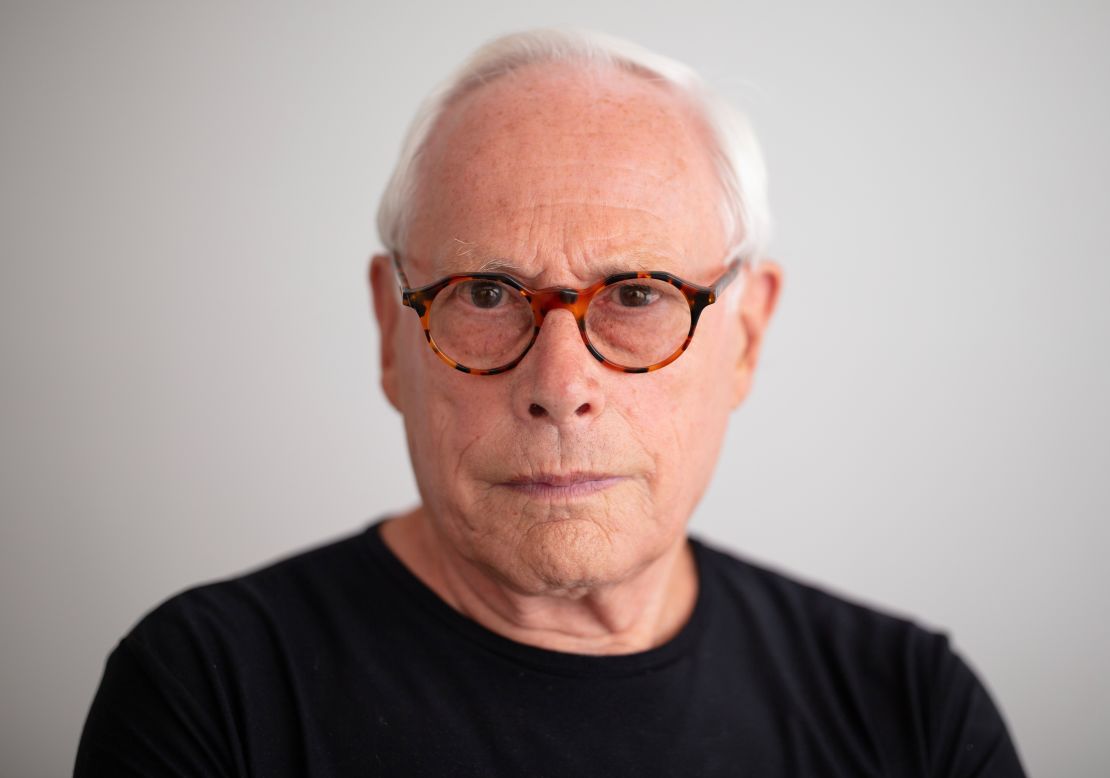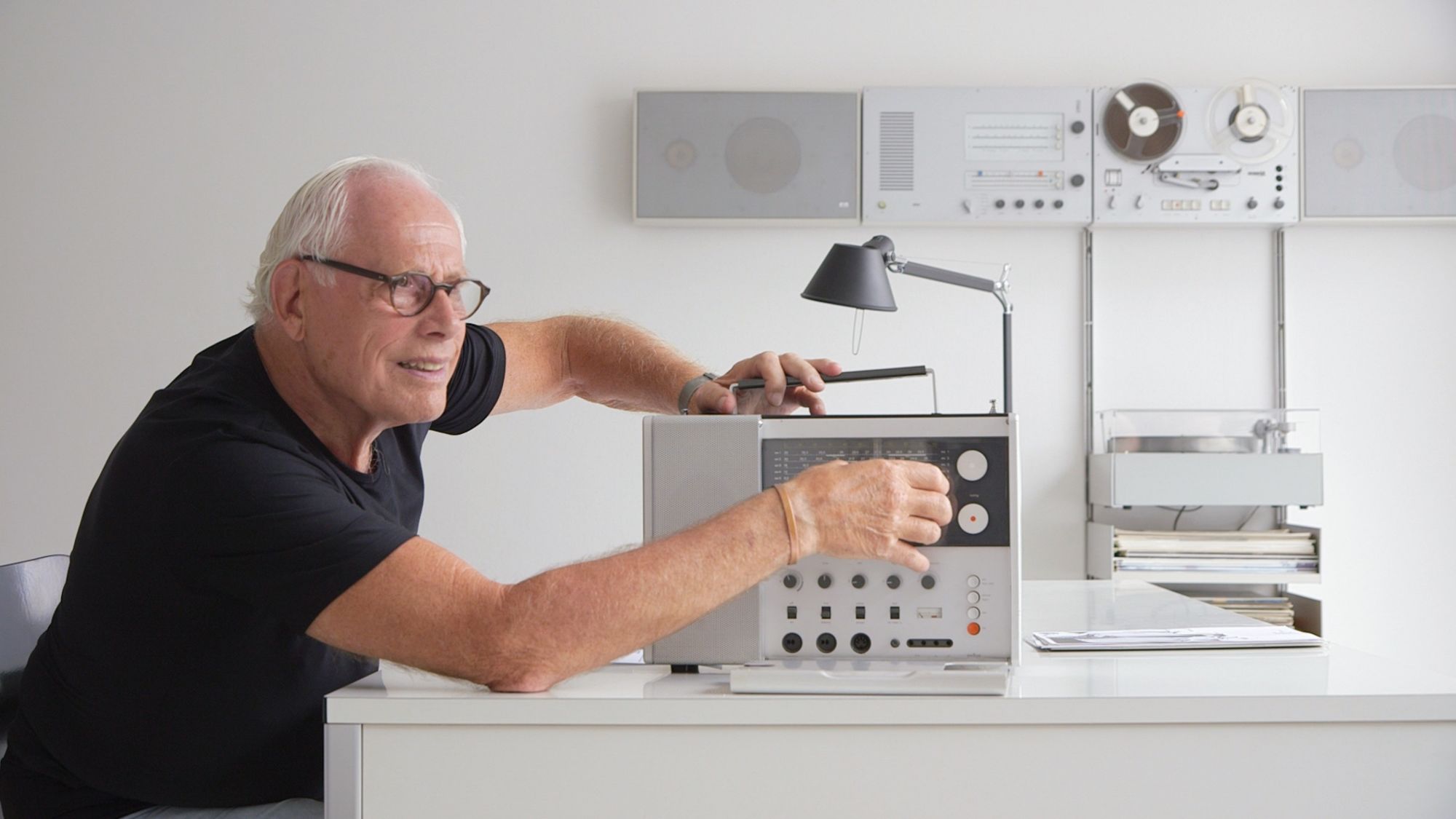“Good design is as little design as possible.” These few words encapsulate the philosophy of German designer Dieter Rams, whose sleek and understated household products coined an aesthetic sensibility in the 1950s that is still regarded as influential to this day.
The clocks, radios, calculators, cameras and various kitchen appliances he created for Braun have left such a mark that they still inform the design of modern devices – Apple’s Jony Ive said his work is “beyond improvement.” Despite all of that, Rams himself has spent his career avoiding the spotlight, seemingly trying to escape the role bestowed upon him of godfather of industrial design.
Now, a new exhibition at Philadelphia’s Museum of Art and “Rams,” a documentary film about his life which was four years in the making, offer a rare look into his design process.
10 principles
Dieter Rams started his career as an architect, and joined German appliance manufacturer Braun in 1955 to work on the interior design of its offices. His move to industrial design was serendipitous and netted him the role of head of design from 1961 until 1995. In the late 1970s, he distilled his design philosophy into ten principles:
Good design is innovative. Good design makes a product useful. Good design is aesthetic. Good design makes a product understandable. Good design is honest. Good design is unobtrusive. Good design is long-lasting. Good design is thorough down to the last detail. Good design is environmentally friendly. And of course, good design is as little design as possible.
Dieter Rams' most influential designs
“His iconic commandments really did shape how we think about the industrial designer’s mandate,” said Colin Fanning, curator of “Dieter Rams: Principled Design,” during a phone interview.
“I think they are enormously influential, still today. They just are a handy distillation of the different considerations that a product designer or a graphic designer and increasingly interface designers have to think about. But he’s written that these were never meant to be commandments in the way that they’ve kind of become. They give an impression of an inflexible approach to design which is not what he’s advocated in at all.”
In that slight regret there’s a lot of Rams’ personality and an apparent modesty, which is effectively captured in the documentary that filmmaker Gary Hustwit has built around multiple interviews in his home in Kronberg, near Frankfurt, and by following him on the rare public events that he attended over the course of the last four years. At one of these events, Rams gracefully declines a request to sign one of his products, explaining that “he is not a star designer.”
“It took several months back and forth to get him to agree to do the film, because he really didn’t want to have a documentary made about him initially,” said Hustwit in a phone interview. “But what is in the film is the real Dieter Rams. I think it was fairly easy to to get to him, because he’s the same on camera or off camera. He doesn’t care if the cameras are running or not. And that’s a big difference from a lot of designers that I’ve interviewed: most of them choose their words very carefully when the cameras are rolling, but he’s the same either way.”

Less, but better
The appliances that Rams designed at Braun are functional, easy to use, and durable. Their aesthetic isn’t necessarily exciting, or arresting, but rather elegant, and still very contemporary even though the earliest designs are now over 60 years old. Their rounded edges and clean lines are very reminiscent of today’s Apple devices.
Jony Ive writes in the introduction to “As little design as possible,” a book on Dieter Rams published by Phaidon: “The surfaces were without apology, bold, pure, perfectly-proportioned, coherent and effortless. (…) No part appeared to be either hidden or celebrated, just perfectly considered and completely appropriate in the hierarchy of the product’s details and features. At a glance, you knew exactly what it was and exactly how to use it. (…) I was completely enchanted with it then, and I now find, with surprise, that this object resonated so deeply with me that nearly forty years on I remember my sense of it with startling clarity.” The fact that he’s talking about a juicer (1972’s MPZ 2 Citromatic) rather than some more sophisticated piece of technology is a testament to the universality of Rams’ design principles.
Apple has often paid homage to Rams’ designs, for example in the looks of its podcast and calculator apps. Some say that his 1958 T3 radio – designed with Ulm Hochschule and part of MoMA’s collection along with 22 more of his Braun objects – has directly inspired the look of the iPod. “I mean, that’s 1958. Nothing looks like that in 1958. It’s just in another universe and it still looks that way,” said Hustwit.
Hustwit asked Rams about Ive’s admiration of his work and his influence on Apple products. “He thinks it’s a compliment. He likes Jony a lot. But I think it’s hard for him to judge that impact because he doesn’t have a computer. He’s not on the Internet. He’s not interested in digital interfaces and user experience design and all these screens that we have to look at all day. There are no screens in his life, there’s just an old Braun television from the 1980s and that’s really the only screen in his house. It’s just not something that he’s interested in engaging with.”
According to Fanning, while the influence is evident, it is also accompanied by a kind of tension. “A technology company like Apple relies on the principle of rapid obsolescence and releases a new iPhone every year. That runs very counter to the philosophy that Rams has developed and advocated over his career. He is much more on the side of a long lasting, durable design, things that can resist that impulse towards consumerism and wastefulness,” he said.
No waste
Consumerism is in fact a main theme of Hustwit’s film, for the simple reason that it is a main theme in Rams’ thoughts. In a previous interview, he even declared that “If I had to do it over again, I would not want to be a designer.”
Rams feels that he has played a role in pushing society towards materialism and away from sustainability, even though he’s had a concern over the environmental impact of his products long before that became fashionable, or even rational. “That’s something he’s been talking about for 40 years now. It’s a huge huge part of his philosophy but I think in some ways he feels that he hasn’t done enough to get people to listen, especially outside of the design world. That’s one of the things he’s most frustrated about and probably why he agreed to do the documentary in the first place, to reach a larger audience and find a way to get those ideas to the next generation,” said Hustwit.

Integral to his approach was designing objects that would last. His first foray into creating furniture, the 606 Universal Shelving System he made for Vitsoe in 1960, is designed to last a lifetime and adapt to different rooms and houses, moving along with its owner. It is also been in production and on sale ever since.
“He is really in large part responsible for creating the idea that design is at the heart of business. He was really one of first to say that design is integral to creating a responsible corporate approach, long before we had these jargon terms around corporate responsibility that set are pretty familiar today,” said Fanning.
But can a man who doesn’t own a computer and is not online fully grasp the extent of his own legacy? “I don’t think so, he can’t really put that into context,” said Hustwit.
“I think he doesn’t have a real sense of his impact and his influence on other designers.”















